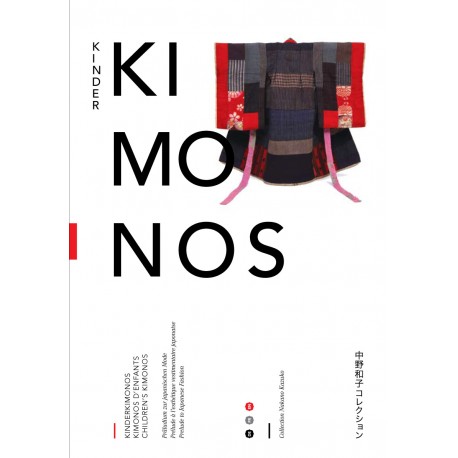| Description |
Le Japon, un pays où la culture vestimentaire occupe une place très importante et atteint un raffinement extrême, a depuis des millénaires montré un goût particulier pour les vêtements d’enfants. Certains kimonos d’enfants du 16ème et du 17ème siècle, certainement conçus pour être portés par des enfants de familles nobles et conservés de nos jours dans des temples shintô ou bouddhiques, témoignent de cet attachement très fort.
A une époque où la vie d’un enfant était parfois brève, les familles, et en premier lieu les mères, transmettaient tout leur soin et leur cœur aux enfants à travers des vêtements qu’elles commandaient ou qu’elles confectionnaient de leur propres mains.
Les motifs peints, teints ou brodés sur ces kimonos sont riches en significations : ils représentent les vœux de santé, les prières pour la force, la gentillesse, l’intelligence, la prospérité ou encore la beauté. Les motifs typiques des kimonos d’enfants sont ainsi des tortues, des grues, des bambous, des pins ou des chrysanthèmes, autant de symboles pour ces qualités.
La collection Kazuko Nakano contient plusieurs centaines de kimonos d’enfants, de la fin de la période Edo au début du 20ème siècle. Kazuko Nakano les a réunis avec le soin et l’amour que l’on porte aux enfants et en pensant aux mères de tous les siècles…
Ce projet montre environ 130 pièces : kimonos, accessoires – sacs, ceintures, parapluies – et quelques illustrations d’enfants portant des kimonos.
Japan, a country in which sartorial culture occupies a very important place and reaches the height of elegance, has for many millennia born witness to a distinctive taste for children’s clothing. Certain children’s kimonos from the 16th and 17th centuries, most certainly designed to be worn by children of noble families and preserved nowadays in Shinto and Buddhist temples, encapsulate this strong attachment.
At a time when the life of a child was often short lived, families, and especially mothers, would transmit all of their care and love to their children through the clothing they had made for them, or that they themselves made by hand.
The patterns that were incorporated into the kimonos, dyed or embroidered are rich in meaning: they can represent good health; rocks for strength, kindness, intelligence, prosperity or even beauty. The typical patterns that appear on children’s kimonos include turtles, cranes, bamboo, pine trees and chrysanthemums, all of which serve as symbols for the aforementioned qualities.
The Kazuko Nakano collection contains several hundred children’s kimonos, ranging from the end of the Edo period to the beginning of the 20th century. Mrs Nakano has build up the collection with care, and with the same love that we give to children and accord to mothers throughout the centuries...
This project exhibits around 80-100 items: kimonos, accessories – bags, belts, umbrellas – and several illustrations of children wearing kimonos.
Catalogue trilingue / Trilingual catalogue |
 Vue large
Vue large

